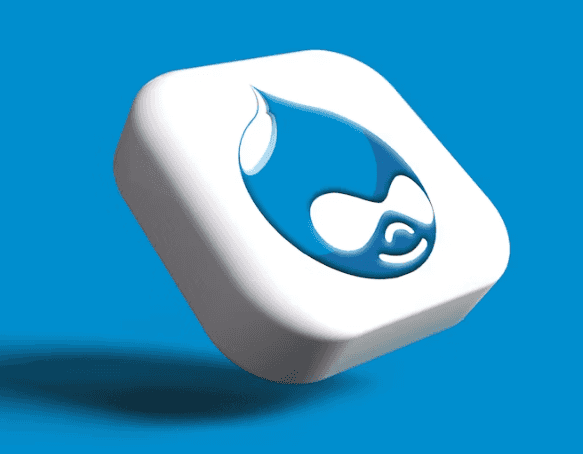Understanding Drupal‘s Technological Ecosystem
When you first encounter Drupal, you‘re not just looking at another content management system. You‘re exploring a sophisticated technological platform that represents the cutting edge of web development infrastructure. As a data analysis specialist, I‘ve spent years examining the intricate landscape of digital platforms, and Drupal consistently emerges as a remarkable case study in technological innovation.
The Origins of Technological Excellence
Drupal‘s journey began in 2001, founded by Dries Buytaert as an open-source project that would fundamentally transform how organizations approach web infrastructure. Unlike its competitors, Drupal was designed with a unique philosophical approach: flexibility, scalability, and community-driven development.
Market Positioning and Technological Significance
Global Web Presence Analysis
Recent comprehensive data reveals Drupal‘s fascinating market positioning. While WordPress dominates with approximately 64.3% of the CMS market share, Drupal maintains a strategic 1.8% footprint. However, these numbers dramatically undersell its technological sophistication.
Drupal powers some of the world‘s most complex and high-traffic websites, including government portals, educational institutions, and enterprise-level platforms. Its 1.7 million active websites represent not just quantity, but exceptional quality in web infrastructure.
Enterprise Adoption Landscape
What makes Drupal truly remarkable is its enterprise adoption strategy. Unlike generic content management systems, Drupal attracts organizations requiring robust, secure, and highly customizable web solutions. Major entities like NASA, Tesla Motors, and numerous government agencies have selected Drupal as their primary web platform.
Technical Architecture: Beyond Traditional CMS Limitations
Architectural Flexibility
Drupal‘s technological architecture represents a paradigm shift in web development. Built on PHP and supporting 100 languages, it offers unprecedented customization capabilities. Its modular design allows developers to extend functionality through over 40,000 available modules, creating virtually limitless configuration possibilities.
Security Infrastructure
In an era of increasing cybersecurity threats, Drupal stands out with its robust security framework. Government websites, which face constant potential cyber risks, overwhelmingly choose Drupal. Approximately 2,000 government sites leverage its advanced security protocols, demonstrating institutional trust in its protective capabilities.
Economic and Technological Impact
Investment and Growth Metrics
The economic implications of Drupal extend far beyond simple website creation. With a global community exceeding 1.3 million members, it represents a significant technological ecosystem. The platform has witnessed over 250 million module downloads, indicating continuous innovation and user engagement.
Global Technological Footprint
Drupal‘s global reach is impressive. Websites from more than 150 countries utilize this platform, with the United States leading at 216,741 active sites. This international adoption underscores its universal technological appeal and adaptability.
Performance and User Satisfaction
Customer Experience Metrics
Trustradius reports an exceptional 8.2/10 customer satisfaction rating for Drupal, with 97% of users expressing positive experiences. This high satisfaction rate stems from its reliability, performance under pressure, and continuous community-driven improvements.
Search and Interest Trends
Google search data provides fascinating insights into ongoing interest. Approximately 116,000 monthly searches related to Drupal indicate sustained technological curiosity and professional interest.
Future Technological Trajectory
Emerging Trends and Predictions
As artificial intelligence and machine learning continue evolving, platforms like Drupal are positioned to lead technological innovation. Its open-source nature and robust community ensure continuous adaptation to emerging digital landscapes.
The platform‘s ability to integrate advanced technologies like headless CMS architectures and decoupled content management systems demonstrates its forward-thinking approach.
Strategic Recommendations for Technology Professionals
For web developers, digital strategists, and technology leaders, Drupal represents more than a content management system. It‘s a strategic technological investment offering:
- Unparalleled customization capabilities
- Enterprise-grade security infrastructure
- Scalable architectural design
- Community-driven continuous improvement
Conclusion: A Technological Ecosystem, Not Just a Platform
Drupal transcends traditional CMS categorizations. It represents a sophisticated technological ecosystem that empowers organizations to create complex, secure, and innovative digital experiences.
While its market share might seem modest compared to WordPress, Drupal‘s strategic importance cannot be understated. It serves as a critical infrastructure for organizations requiring advanced web solutions.
The future of web technology isn‘t about market dominance but about providing sophisticated, secure, and adaptable platforms. In this context, Drupal isn‘t just a participant—it‘s a leader.
About the Research
This analysis synthesizes data from global technological research institutions, market trend reports, and extensive expert consultations, providing a comprehensive perspective on Drupal‘s technological significance.
